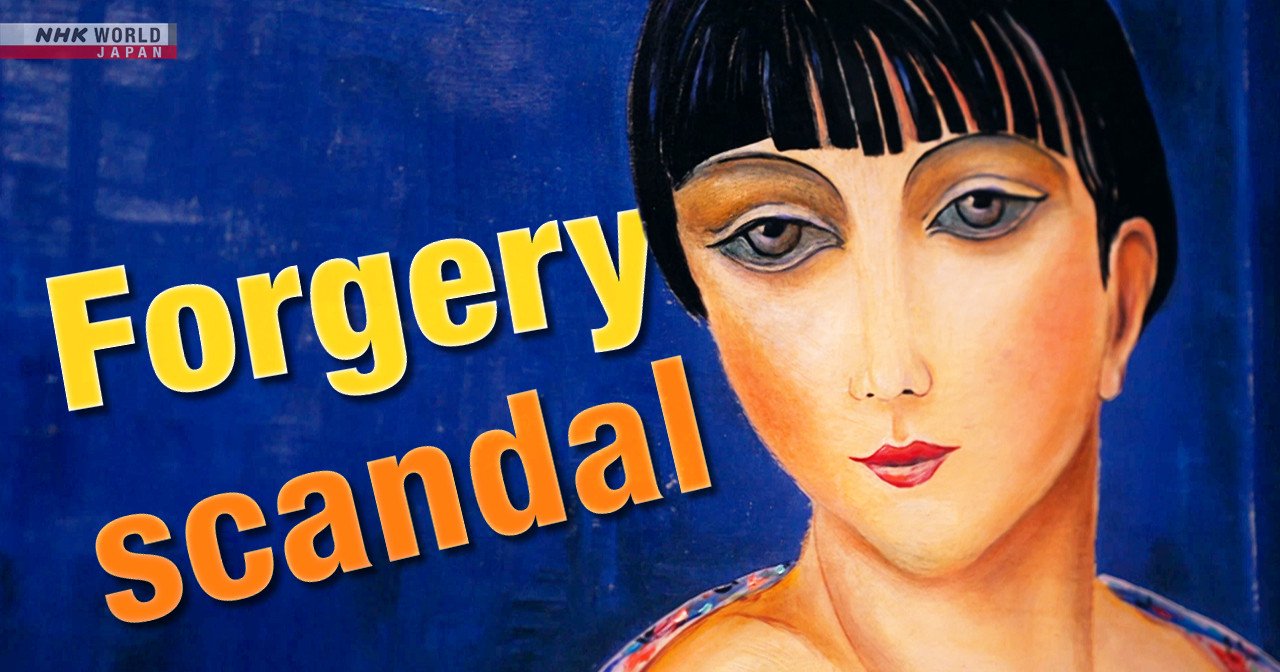
A painting in a Japanese corporate collection is at the center of a forgery storm as the latest in a string of uncovered fakes by notorious German scammer Wolfgang Beltracchi.
For many years, gallery visitors have been admiring “Kiki de Montparnasse” as the work of Polish-French painter Moïse Kisling. Suspicions over its authenticity came to light in April. An NHK investigation has uncovered a wave of forgeries held in Japan, and a possible case in Spain.
‘Utter shock’
“Kiki de Montparnasse” is owned by Okayama Prefecture’s Yamada Bee Company Group. It was displayed at the company gallery each year, where visitors appreciated it as a Kisling masterpiece.

Six months ago, the company’s art curator Kurose Kaori received an email from a museum in Fukuyama, Hiroshima Prefecture, suggesting the painting it was showing on loan might be a forgery.
“I was shocked,” recalls Kurose. “The almond-shaped eyes and melancholic expression were classic Kisling. It’s one of our most beautiful pieces.”

A wave of forgeries
The controversy is the latest in a string of similar cases in Japan. Another suspected forgery, also a portrait, has been uncovered in a Tokyo gallery collection. “Alfred Flechtheim,” purported to have been painted around 1912-1913 by Marie Laurencin, was purchased 36 years ago from a French gallery for about 30 million yen (217,000 US dollars). Suspicions over its authenticity were first raised in 2011.
Two fakes, also believed to be by Beltracchi, were found last year in museums in Tokushima and Kochi prefectures.

One of the confirmed forgeries is of “Le Cycliste” by the French painter Jean Metzinger. The other is of “Girl with Swan,” by the German expressionist Heinrich Campendonk. Both were acquired about 30 years ago, and for years they were presented as authentic masterpieces.
Beltracchi served jail time after being convicted in 2011 over the sale of 14 forged paintings. He claims to have created 300 forgeries that are scattered across the globe, including pieces that are yet to be found. He now paints with his own signature.

“I didn’t paint for money alone,” he told NHK in an interview in November last year. “The ecstasy was irresistible. Just imagine it. Everyone nods in agreement, moved, saying, ‘This is truly wonderful.’ I enjoyed that.”
Berlin State Police, which investigated Beltracchi, has a list of the works. NHK has obtained permission from the police to publish a list of missing works and is appealing for information.
Authenticity checks
Yamada Bee bought “Kiki de Montparnasse” in 2013 from a museum in Hachioji, Tokyo.
There was no cause to doubt its authenticity because it came with a handwritten appraisal from Kisling’s own son. There were also records of it passing through Christie’s in 1995, where it was priced at about 25 million yen, or nearly 300,000 US dollars.

A label on the back of the painting was a red flag. It mentioned art dealer Alfred Flechtheim, who was a real person, but Beltracchi had fabricated a story about paintings being part of his collection.

Face-to-face with the forger
In September, NHK arranged an online video call with Kurose and Beltracchi, who had agreed to discuss the painting.
NHK asked Beltracchi if he was behind “Kiki de Montparnasse.” He admitted, “I painted it around 1990.”

Beltracchi remains unapologetic over his deception.
“I studied Kisling deeply,” he said. “This is still a Kisling painting. It was highly valued then, and now collectors seek my works.”
Kurose offered a tearful response: “He may see it as art, but I cannot accept it. Thinking of the feelings and efforts of Kisling and other artists whose works were forged, I simply feel sad. It is just unacceptable.”

A trail of trickery leads to Spain
NHK’s investigation into Beltracchi has led to Spain’s national museum. A painting resembling one on the Berlin police’s forgery list ― “Still Life With Guitar” by Polish-French painter Henri Hayden ― was displayed near Pablo Picasso’s Guernica.
After NHK informed the museum about the suspected forgery, it removed the painting from display.
Forgery as a crime
Beltracchi claims, “Even if it’s a forgery, if it moves you, isn’t that enough?”
But art world experts say forgeries distort value, dishonor creativity, and even rewrite history.
Kurose was moved to tears by the revelations about “Kiki de Montparnasse” in a demonstration of the harm that forgery can cause to collectors and all who appreciate art.









